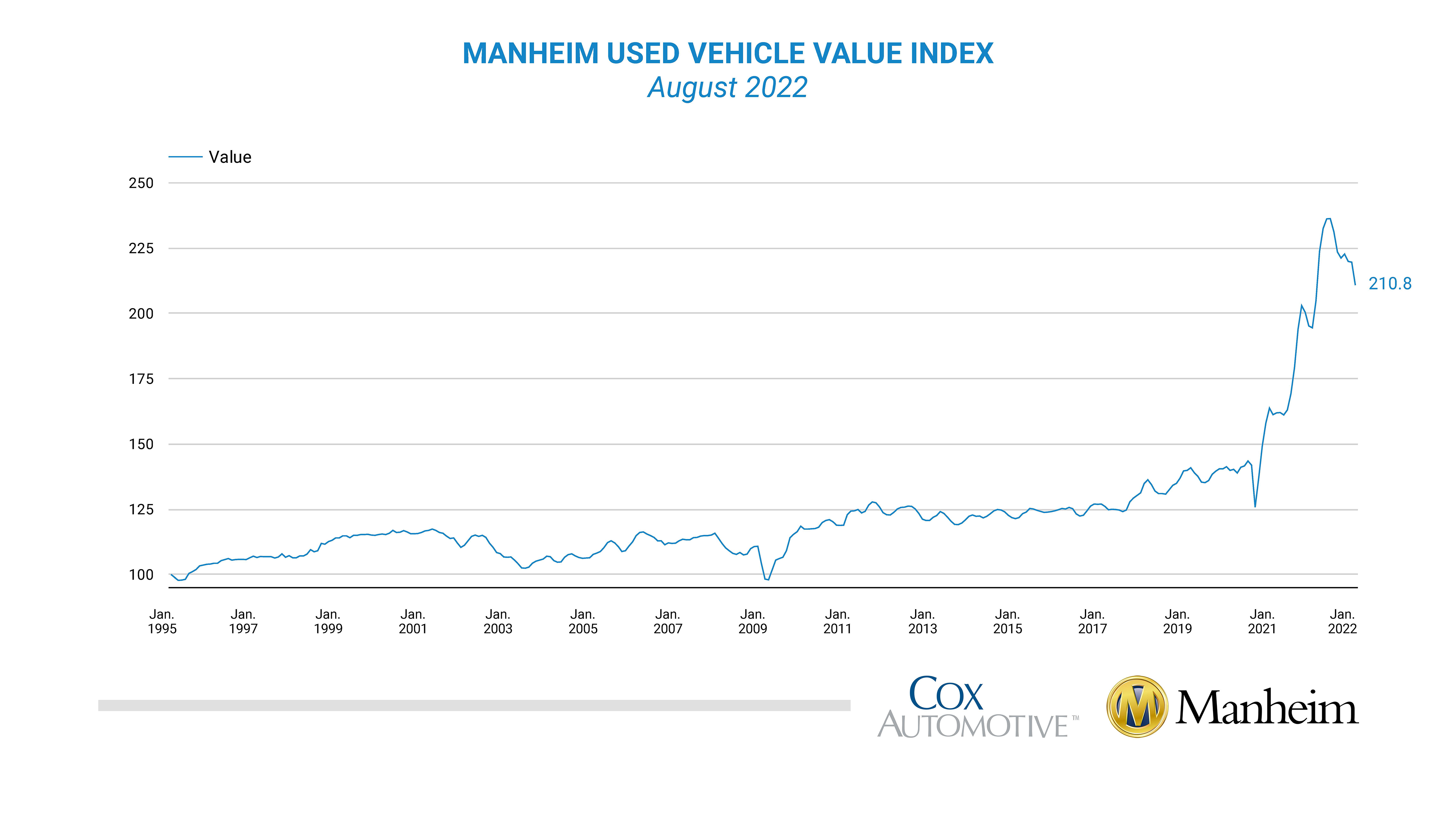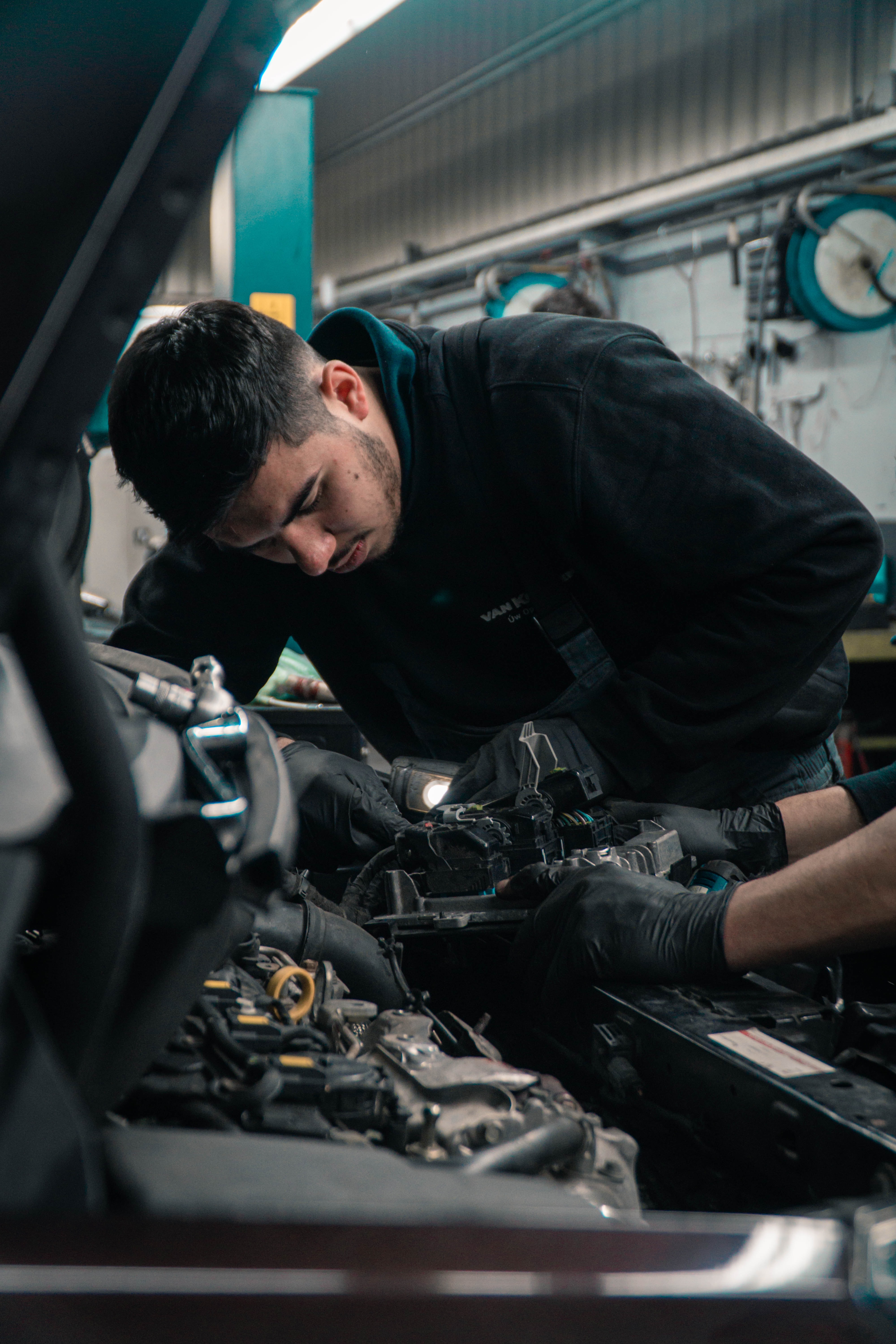A Seller’s Market: Vehicle Remarketing Strategies to Boost Cash Flow
By James Crocker, Merchants Fleet
The post-2020 economy has been nothing short of a whirlwind, and with a potential recession looming on the horizon, some businesses have begun to make preemptive decisions regarding their organization. Despite these concerns, one market continues to remain strong – used vehicles. The Manheim Used Vehicle Value Index increased by 12.5% year over year in August 2022, making it a great time to sell your unneeded vehicles and infuse cash into your business.

Source: www.manheim.com
Before choosing vehicles to sell from your fleet, the first step taken should be to analyze all available data points to differentiate between units being used at full capacity and those not at optimal levels. Data from telematics devices (or connected vehicle software) is especially helpful for this purpose.
Once usage has been decided, you should take inventory and review the types and classes of vehicles being driven. Some good thoughts to consider: is the vehicle a good fit for its current deployment or usage? What is the cost per mile to use? Example: are drivers making runs with full-size SUVs that may be more cost effectively managed with medium duty pick-up trucks, crossovers, hybrids or EVs? If so, then it may make sense to consider changes.
Additionally, keep market demand and relative strength of pricing in mind in relation to short-cycling. When you aim to resize or replace your vehicles based on usage, it can save more money now, and boost returns on your sales depending on what you’re looking to move.
Once the analysis is complete, your findings may show that your company is already working at the best levels possible. However, short cycling may still be a desirable choice that allows your organization to take advantage of unprecedented high wholesale values at auction. There are many options to rent for the short term and fill in any gaps in the fleet (including peak season) while mitigating against the impact of depreciation and changing market conditions.
Making the Sale
When you’ve decided to sell your vehicles, there are three common ways to complete the transaction.
Remarketing on your own
Effort: ⛏⛏⛏⛏ Time to Sell: ⌚⌚⌚⌚ Return: $$$$
Organizations that decide to sell or remarket their vehicles on their own may not always maximize their sale results for their vehicles. In fact, there can be several disadvantages including but not limited to time invested, negotiations, reconditioning needs, resolving mechanical issues, adjusting pricing, and more.
Vehicle remarketing through auctions
Effort: ⛏⛏⛏ Time to Sell: ⌚⌚⌚ Return: $$
While there are many auto auctions across the United States that gather buyers and sellers together in a competitive bidding environment, the process can be time consuming and expensive to manage independently.
Using a vehicle buyback program
Effort: ⛏ Time to Sell: ⌚ Return: $$$
Businesses that want the fastest cash infusion can take advantage of a vehicle buyback program, such as the GuaranteeBuy option offered through Merchants Fleet. This closely mirrors a traditional “trade in” program that most car dealerships offer, however, there is no pressure to purchase additional vehicles after the sales transaction.
These types of programs make remarketing your fleet, whether one vehicle or 100, as simple as possible. For example, GuaranteeBuy has a team of highly experienced, non-biased vehicle remarketing professionals that review vehicle information, condition, and photos to return a fair market quote within 24 hours. Once accepted, vehicle pickup is taken care of by Merchants fleet and payments are sent quickly, saving you time and money when remarketing.
Maximizing Return
However you decide to remarket your vehicles, overall preventative maintenance is critical to maximize return. Offering vehicles for sale with irregular service histories, unknown issues or missed disclosures can erode interest even in a robust market. Overall vehicle condition, bumper-to-bumper, is critical to increased interest and sale amounts.
Even newer, low mileage vehicles in your fleet gain benefit from consistent preventive maintenance work such as basic oil changes and tire rotations performed at regular intervals.
Now that it’s time to remarket your vehicle, the question of what to repair or recondition is of top priority, as this ultimately affects the sale outcome. During pre-sale inspections, wear/damage can fall into 3 categories: must repair/nice to repair/unnecessary to repair.
Must Repair:
If the safety of the vehicle is compromised in any way due to a damaged or defective part, the item should be replaced before the sale. This includes:
- Missing, broken, or inoperative lights and bulbs
- Broken or cracked windshields and mirrors
- Broken inner or outer doors and toolbox handles
- Any leaks inside or underneath the vehicle
Any vehicle graphics or branding should also be removed prior to sale, as decals, lettering, and wraps negatively affect value.

Image: Freepik
Nice to Repair:
Maximizing the ROI for any repairs or recondition is critical. The rule of thumb used to be to aim for 3-fold return for every dollar spent, but it’s much more complicated than that. Today, you should look to invest a dollar-for-dollar return, especially on units that may have run multiple times or have any unique issues. For example, if a cargo van with 80,000 miles on the odometer has tread depths that do not meet minimal specs, potential buyers will factor a replacement set into a lower offer. Even a single worn tire is enough to diminish your return. Plus, when obvious issues are present, buyers will be motivated to look further into other potential items that could require maintenance and reconditioning.
Don’t expect a huge increase in remarketing value, but these items are nice to repair or replace and make for an easier sale:
- Low-tread tires and bent wheels
- Badly scratched or dented bumpers and mirror housings
- Sandblasted hoods
- Ripped seat covers or worn-out armrests
- Floormats

Image: Freepik
Unnecessary to Repair:
If the item isn’t related to safety, you need to question if the return on investment for repair or replacement is worthwhile. While cosmetics can help net higher resales, you won’t always get back what you put into dent repair, for example. However, there is a difference between a ripped seat cushion, which should be repaired, and a cosmetic blemish to the dashboard.
- Missing vehicle emblems or badges
- Engine air and cabin air filters
- Wiper blades and other low-cost, high use items
- Purely cosmetic interior trim, such as a scratched dashboard, bedliner, or trunk

A key point to remember is that using vehicles for more demanding tasks than originally intended can lead to components wearing out more quickly, and can also introduce suspension, tire and mechanical issues. Today’s buyers, at any level, are educated and sophisticated consumers. Trying to save money will eventually cost you money in the end, but repairs are not always a necessity since even salvage vehicles are selling in the current market and can lead to financial gain.
It Helps to Have a Professional Fleet Partner
There’s a lot more to selling your vehicles than meets the eye. Partnering with a fleet management company, such as Merchants, is a fantastic way to take the hassle out of vehicle remarketing. By enrolling in a maintenance plan your vehicles will be in top level condition and command the highest values when it’s time for remarketing. Not only can we help with telematics and route planning to find any inefficiencies in your fleet, but a professional fleet partner can also help with electric vehicles if your business gains benefit from adopting them into the fleet.
 James Crocker
James CrockerJames Crocker, Vice President of Operations – Remarketing, joined Merchants Fleet in 2009 as a Fleet Service Manager. Today, he is responsible for the strategic vision and direction of remarketing, residuals, and asset management within the operational division of Merchants. He manages multi-channel operations; tracks and monitors all new and used vehicle inventories; and works with both OEMs and key vendors to foster relationships. Crocker received his bachelor’s degree in business administration, with a focus on management and finance, from the University of Massachusetts. Crocker currently sits on the advisory boards of the three largest remarketing companies in the U.S.